Cavalier King Charles Spaniel: Everything You Need to Know About Dog Breed
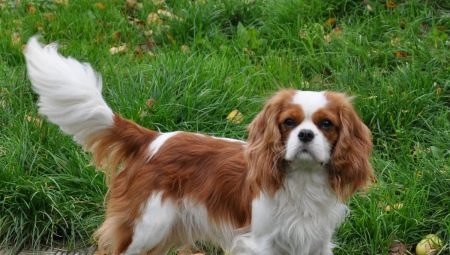
The Cavalier King Charles Spaniel rightfully enjoys special attention from dog lovers. It is called a companion, which is suitable for people of different degrees of activity and age, managing to adapt to the rhythm of life of its owner. The material in this article will acquaint readers with the history of the origin of these pets, tell about the features of their character and conditions of detention.
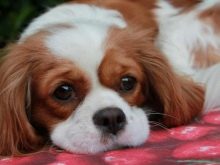
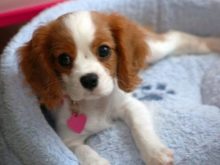
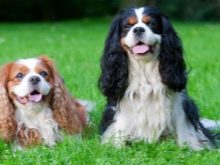
Origin story
The history of the appearance of the breed originates from antiquity. It is believed that the first dogs similar to the decorative breed in question were brought to Britain by the Celts. The animals fell in love with the royal English nobility, and therefore it was decided to start breeding them. The progenitors of the cavalier are the Tibetan Spaniel and the Japanese Chin dogs.
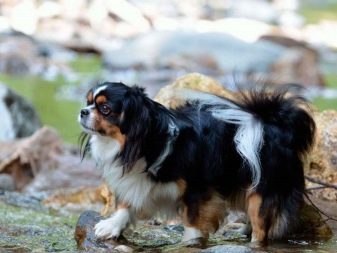
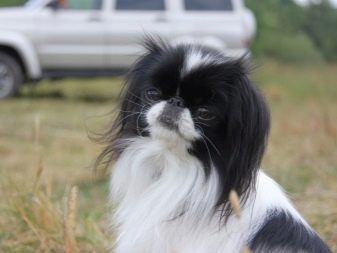
Pets are becoming favorites of the British, however, as an independent breed, they were recognized only in the twentieth century. The peak of the popularity of dogs fell on the XIII century, they were considered indispensable companions of the nobility, they took them with them on the hunt. In addition, they were captured on canvases together with their owners, as evidenced by the canvases of Titian, Watteau, Van Dyck.
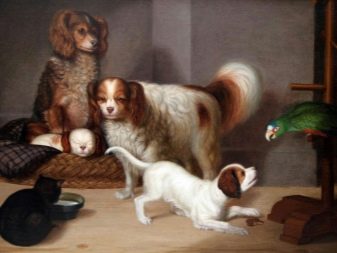
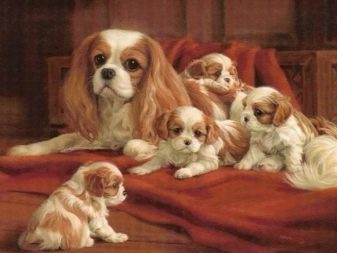
According to one of the legends, one of the dogs accompanied the Queen of Scots herself, Mary Stuart, to the execution.
The name of the breed was given by King Charles II, who lived in the 17th century. However, he had no direct relation to breeding babies. It was at this time that the prefixes "Charles" and "King" began to be added to the name of the dogs.At the same time, small representatives of the breed had access to the building of the British Parliament.
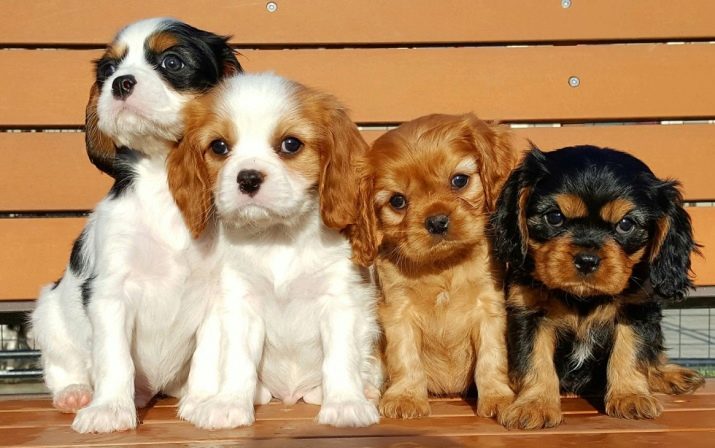
Breeding under the king took place at a crazy pace. Puppies were taught the necessary norms of behavior at court, and then returned to the king so that he could choose the best individuals for himself. The remaining puppies were sold to the nobility, and the dogs were valued not only for their beauty, but also for their benefits: they could cheer up, console and even entertain the owners.
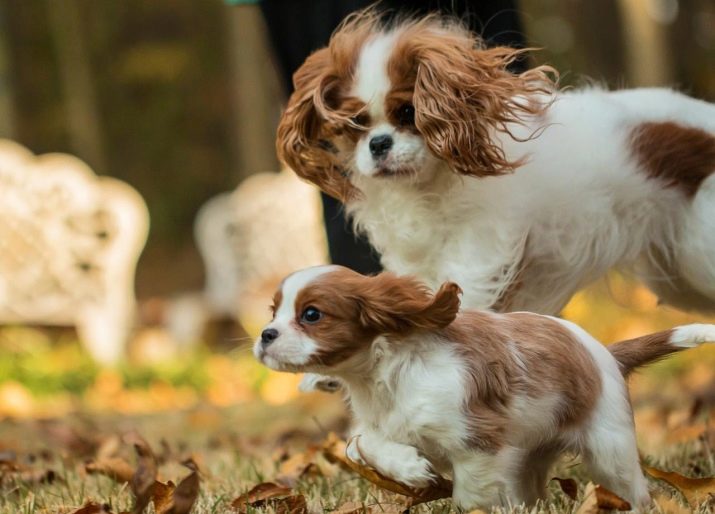
As soon as William II ascended the throne, the popularity of decorative dogs began to fade, as he liked pugs. For the sake of the king, breeders began to breed kings with pugs, which led to the loss of the original appearance. The revival of the breed began around the beginning of the twentieth century, when the British Kennel Club promised a reward to those who could revive the Charles Kings, equating them to the standard.
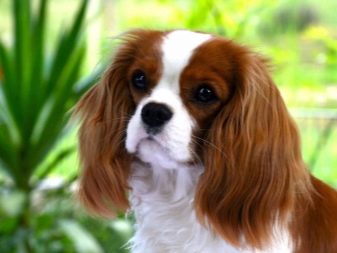
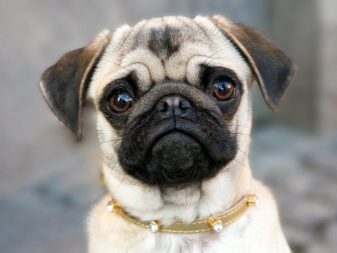
As a result, the first kids, recognized by Europeans as more similar decorative breed dogs, appeared in 1992. The dogs had to be mated with English cocker spaniels, which had a narrow muzzle. Despite the similarities with their ancestors, they also had differences, which could be seen by looking at the canvases of the artists.

From that moment on, the dogs were officially called Cavalier King Charles Spaniels.
Description
The Cavalier King Charles belongs to the breeds of decorative companion dogs of the English Toy Spaniel section. However, Cavaliers differ from ordinary Charles, although they have a common progenitor. The differences lie in the size and structure of the head. According to the generally accepted standard, Cavaliers have a more elongated muzzle and a higher set of ears.
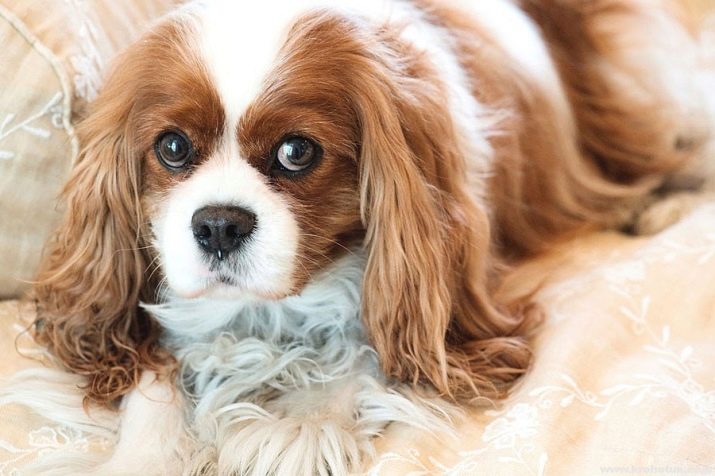
Representatives of the breed are quite graceful and graceful, while they are medium-sized. The average weight of adult females is about 5 kg, while the standard of males is 8 kg. Some individuals are larger and reach 10 kg. The average height of dogs at the withers usually does not exceed 30-33 cm, while the height is subject to gender with a difference of up to 10 cm between males and females.
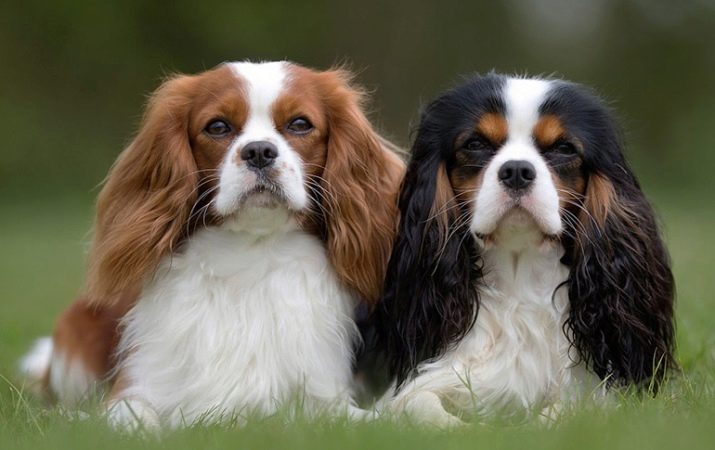
The shape of the head of the Charles Cavaliers is wedge-shaped, its size is small, the skull between the ears is somewhat flattened. The eyes are round and somewhat protruding, shiny and dark. The bite is scissor bite: the upper incisors fit tightly to the lower ones from the outside. They are perpendicular to the jaws.
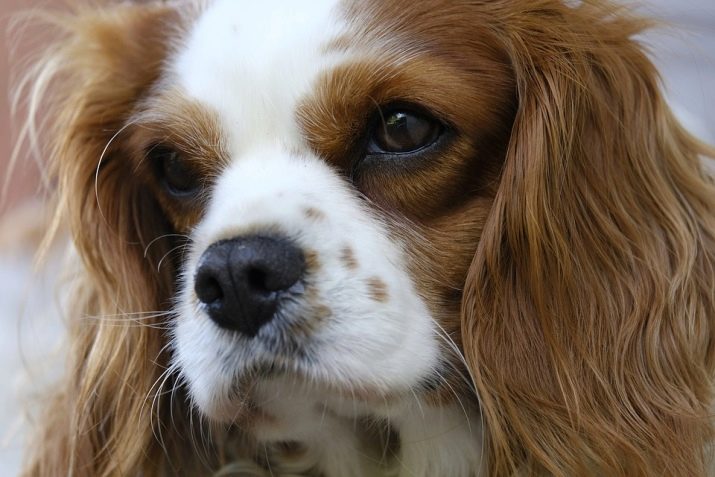
The nose of decorative dogs is black, evenly colored, the ears are long, on the outside they are covered with long silky hair. The body of the representatives of the breed is compact, it differs depending on the sex, in males it is more muscular and large. At the same time, the body has a strong skeleton and developed muscles, the neck has a slight bend.
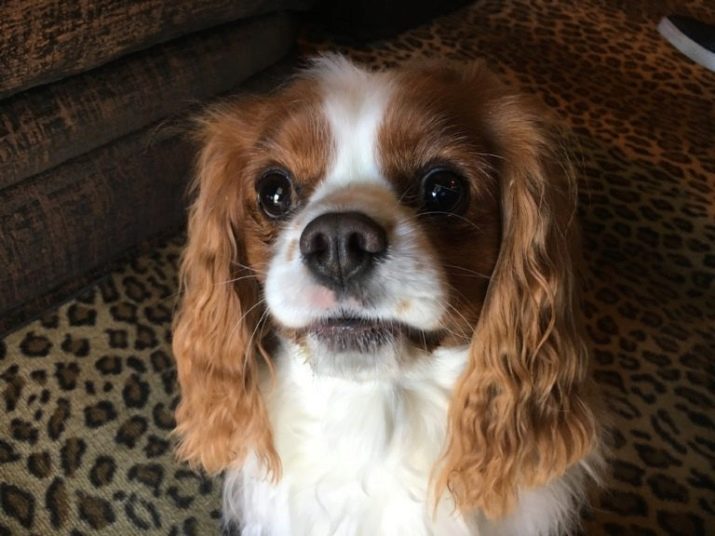
The back of the dog is straight, flat, the chest is medium in width. Paws are moderately proportional, they are even and bony. Their fingers are almost completely covered with thick hair. The animal's tail can be kept at the level of the back or slightly above it.
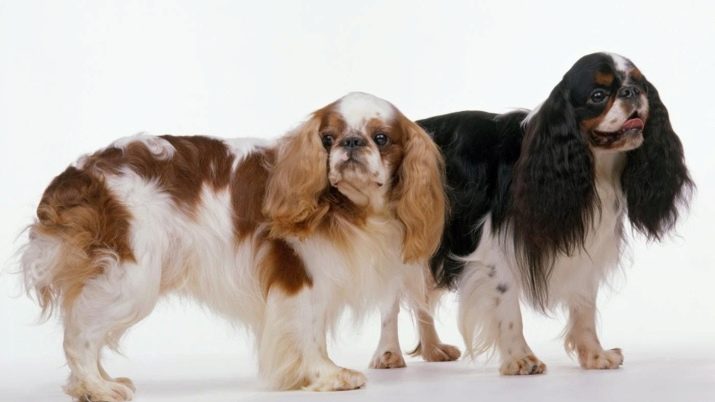
Initially, it was stopped by one third; today this practice is considered outdated.
Unlike kings, cavaliers attract breeders with a truly European charm. They have a long, silky coat that can be completely straight or barely wavy. Their eyes are always sparkling, they are a kind of glamorous aristocrats, which is explained by the aesthetic appeal and elegance of their movements.
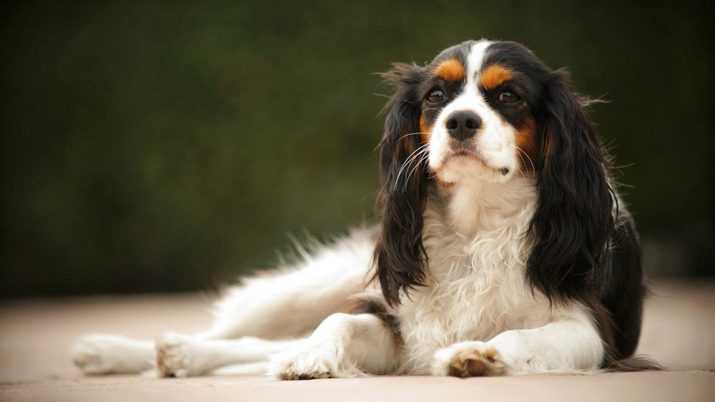
The specific requirements of the standard include weight. If, due to a developmental defect, the weight of an individual is more or less than the prescribed one, it is not allowed to the exhibitions. In addition, non-standard colors and depigmentation of the nose are unacceptable. Among other requirements of the standard, it is worth noting the fact that individuals with an irregular bite, a cleft lip and an irregular gait are not allowed to the exhibitions.
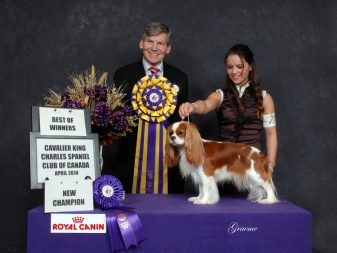

Views
King spaniels can be classified by color type. Based on this, the standard identifies several varieties.
- Blenheim - color, which is characterized by reddish-chestnut markings on a pearl-white base. The markings on the head are equally divided, leaving the characteristic rhombus on the crown, which is a feature of the color of the breed.
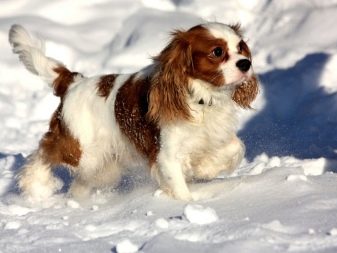
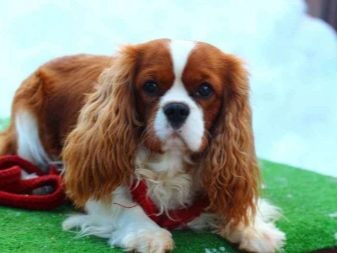
- Tricolor (color Prince Charles) - tricolor color of a fur coat, the basis of which is white, points of black and tan are located in the area of the eyes, cheekbones, inside the ears, paws and under the tail.
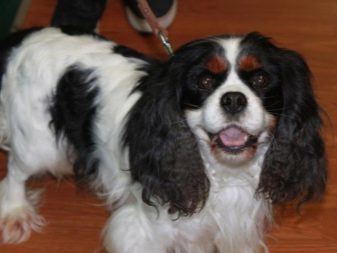
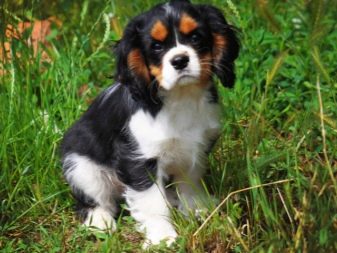
- Ruby - Solid, tan, tan, discouraging white markings. The color may have a mahogany shade.
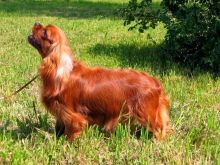
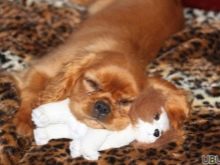

- Black - color, complemented by bright tan marks, anthracite background, well-defined tan marks, noticeable spot borders above the eyes, around the tail, chest and cheeks.
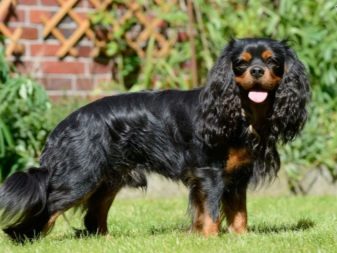
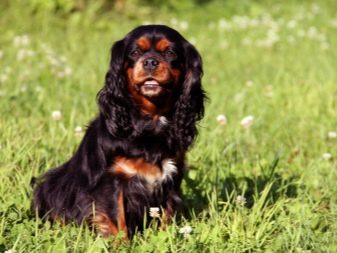
Life span
According to the characteristics of the standard, dogs of this breed live no more than 11-12 years. However, various factors affect life expectancy. For example, improper development, lack of timely care, poor nutritional quality and neglect of preventive examinations in order to identify and prevent various diseases can reduce it.

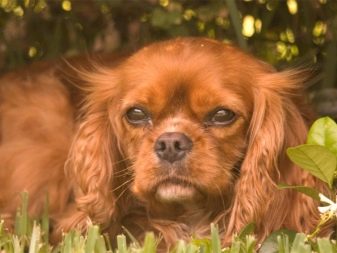
Some individuals barely live up to their decade, and some can be called long-livers: their life resource sometimes reaches 15 years.
The less stress the dog is, the better. Research by modern scientists shows that life expectancy can be proportional to the mass of the animal. The more body weight, the shorter the life resource. However, for some breeders, pets lived for a long time, for example, there is a known case when a decorative dog died at the age of 18 years.
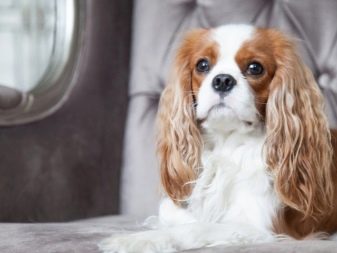
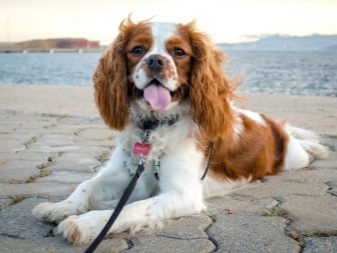
Character traits
Like any other breed, these pets have their pros and cons. The pluses of dogs include the hypoallergenic coat and the absence of the characteristic dog smell, which is important for some breeders. In addition, these pets are incredibly loyal to their owners and family members.
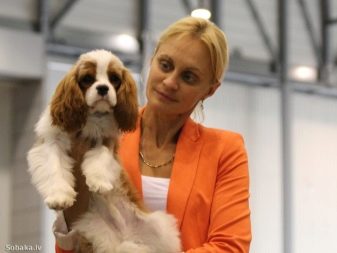
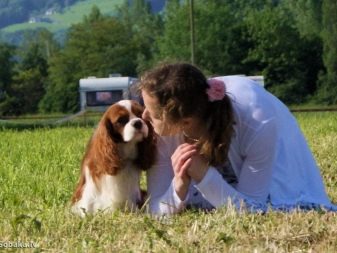
Minuses can be called a certain importunity of certain individuals, as well as the appropriation of the master's things, which in the future the dog will still consider as its property. In addition, despite the fact that gentlemen are not allergenic to humans, they are often allergic themselves.
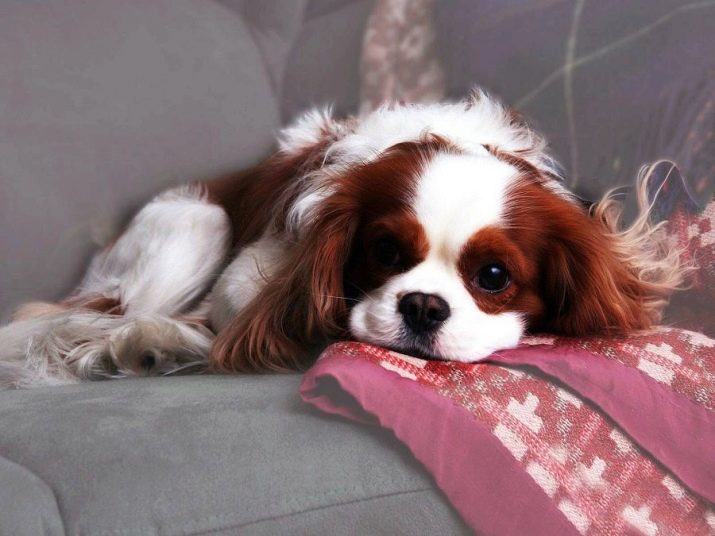
In addition, they have a decent list of breed pathologies.
Perhaps no other breed of dog can compare with the Cavalier King Charles in terms of the degree of involvement in the family. It is vitally important for them to be everywhere and everywhere, which explains the understanding of a specific situation and a quick reaction of the pet. Unlike other representatives of the canine family, they are very sociable, which must be encouraged from childhood, the pet, so that its interest is not replaced by apathy.
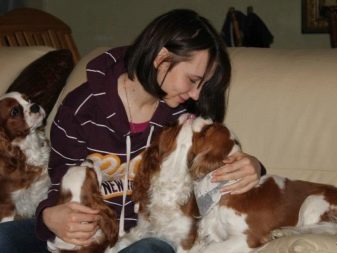
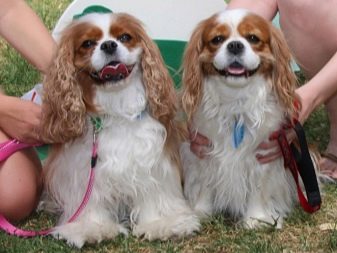
These cute dogs literally adore all family members, and in particular do not like children, sometimes they are overwhelmed with feelings, which they report with joyful barking. They are so friendly that this affects their protective qualities. These babies should not be trusted to guard the home, since they have special attention for the thief too. For example, they can lick him, try to involve him in the game.

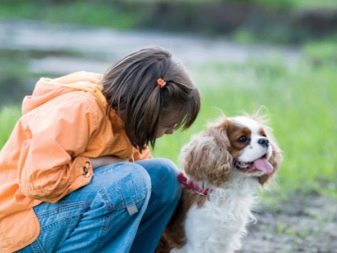
And if they start barking at some point, it is more likely out of an excess of feelings than in order to protect the house.
In the same time these animals do not stand the rude behavior of household members... Some of them may suffer from this, moving away from their owners. Others simply become isolated, which is reflected in upbringing and communication. Given their tendency to resentment, owners often have to recognize their mistakes and be the first to approach and ask for forgiveness. Some representatives of the breed are extremely jealous, although they try to cope with their emotions on their own.
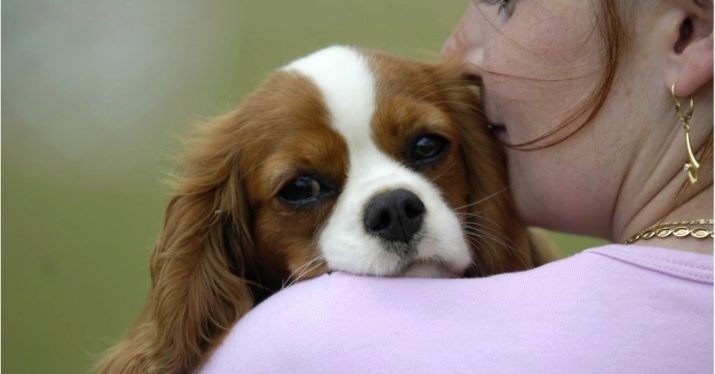
These dogs are referred to as companion pets, they cannot be called breadwinners. However, this in no way affects the learning ability: the animals are trainable and understand the rules set by the owner. With due diligence, they can be taught several commands.
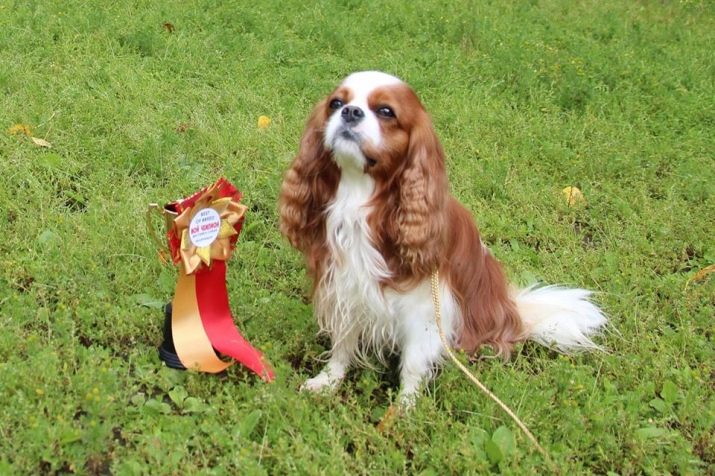
Accommodation with a person is explained by the centuries spent next to him.
Cavalier King Charles are able to play with restless children for a long time. They are playful and good-natured, able to sit for hours on the master's lap. At the same time, some individuals, when meeting with strangers, can show alertness and modesty. Most, on the contrary, are interested in everything new, and therefore they are happy to rush to get to know each other and make friends.
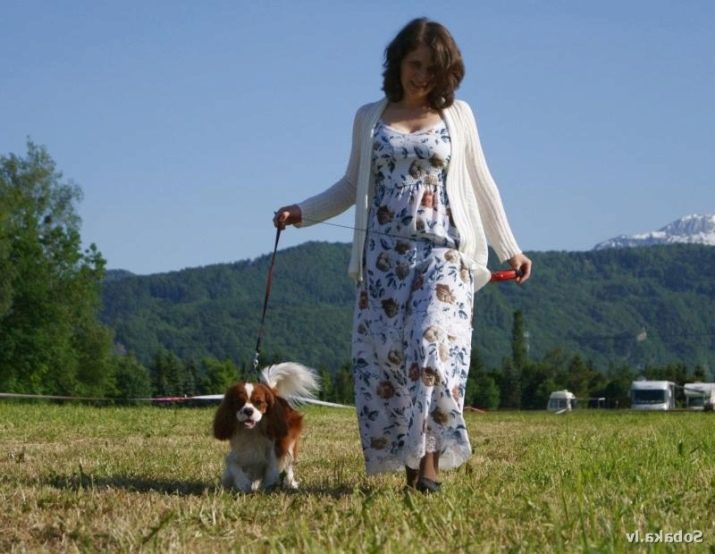
However, aristocrats do not have a love for noisy parties. The noise weighs on them, often frightens them, so the pets try to find a secluded place to wait out the rumble. They fully live up to their royal name, preferring calm and quiet music to noisy events. They do not like it when the owners shout and quarrel among themselves, and also scold the children.
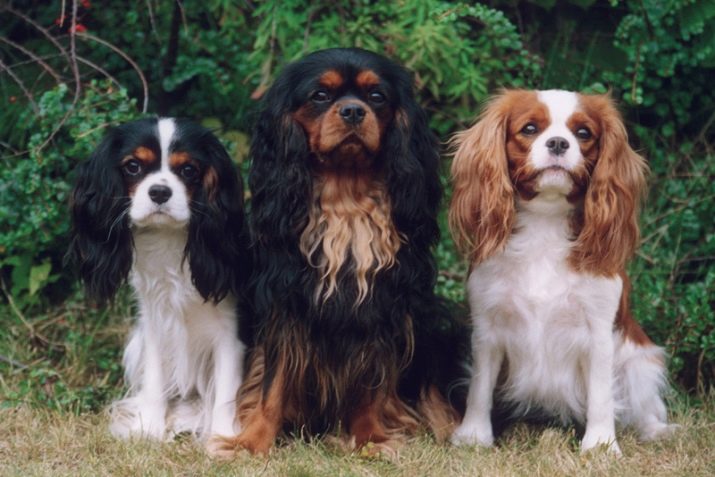
Pet breeders must be balanced in their behavior.
Representatives of the royal decorative breed of dogs love to receive compliments in their address. This gives them a lot of happiness and fosters a positive attitude. Dogs do not like loneliness, they are not adapted to it, and therefore suffer, being without owners or other family members. They report their good mood and readiness to play with loud barks.
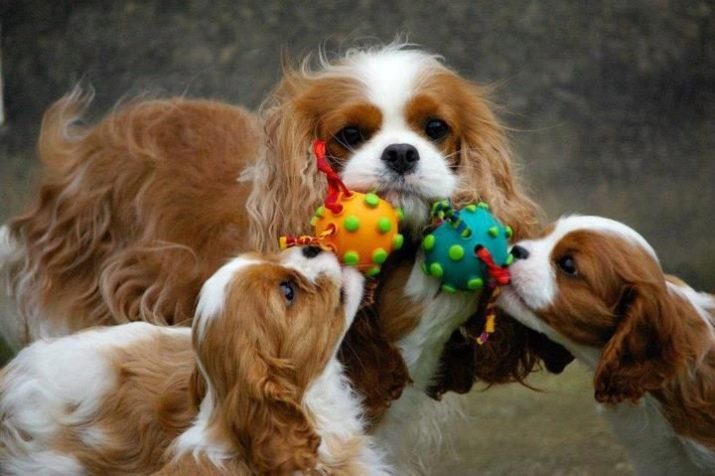
Despite the small size and decorativeness of the breed, royal pets can withstand long walks and travels. They love to travel with the owner, and sometimes they completely adjust to the children's games. For example, some individuals calmly tolerate swaddling and even riding in toy carriages. At the same time, the animal will not allow itself to offend the child and will tolerate the rules of the game with dignity, even if, according to the idea, he will be assigned the role of “daughter” or “son”.
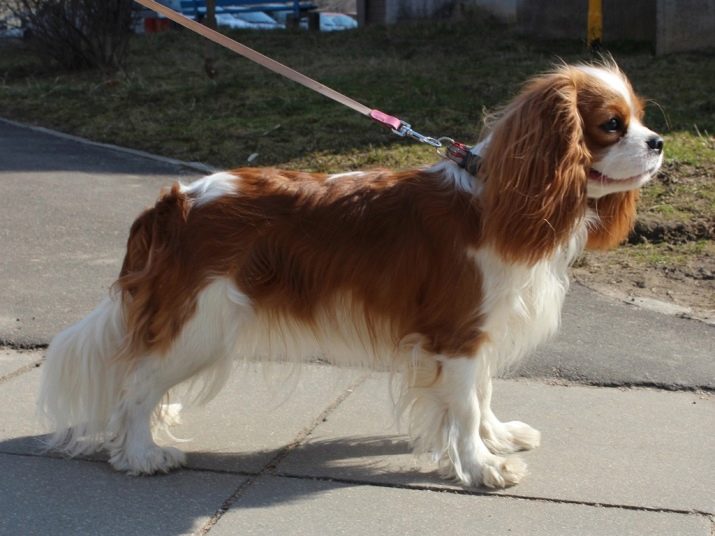
It is impossible not to note the tenderness and trepidation of pets, which they show in relation to a person. Of course, this behavior can be achieved only through correct and timely upbringing, which begins from the moment the puppy appears in the house. A well-bred dog understands when the owner needs to be reassured and supported, she is able to adapt to his condition and even character.
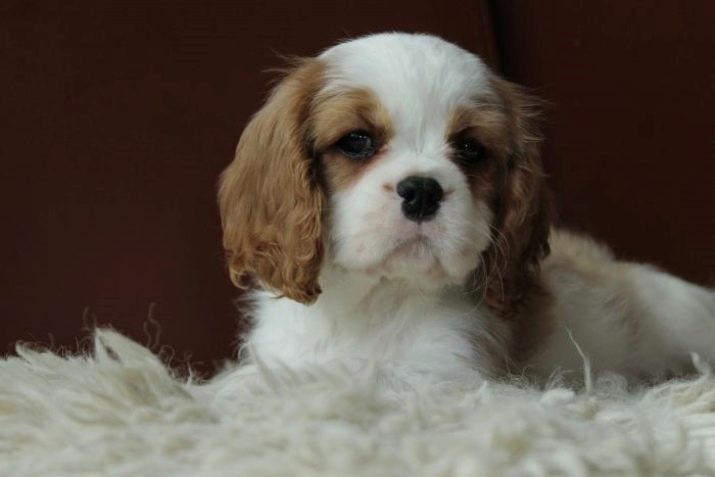
As for the shortcomings, they are associated, first of all, with improper upbringing, which depends on the owner of the animal. Only in rare cases can a dog bite a person. This can happen if the owner mistreats the pet. In this case, the dog will bite exclusively as a defense against the aggression of the owner. Her temperament and obedience do not allow her such behavior, but sometimes she has to show her teeth in order to stop the assault of an individual breeder.
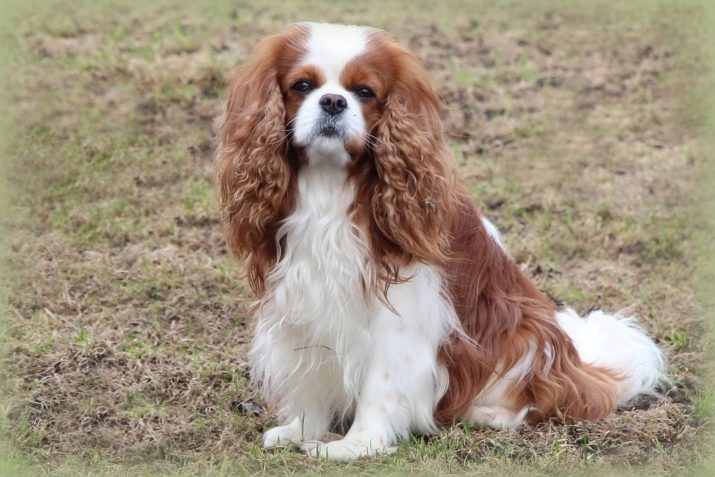
Some individuals of the decorative breed, being alone, turn their attention to furniture and allow themselves to gnaw at it. This is typical of small puppies, and therefore it is necessary to eliminate the lack of behavior from the childhood of the pet. Shyness is unusual for gentlemen, and therefore the dog must be constantly encouraged, praised for good behavior and curiosity.
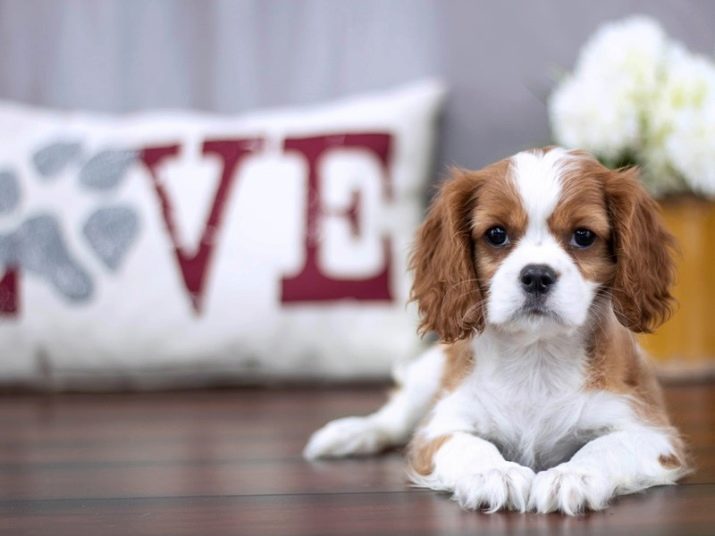
If yelled at, she can grow up stupid, cowardly, or aggressive.
Conditions for keeping
Like any other pet, a puppy should be cared for, cared for and properly cared for. The behavior and development of the animal will depend on how correct the comprehensive care will be. For example, the owner should think about the right flooring, because the puppy's legs will disperse when he stands on the laminate or slippery parquet. As a result, this can result in an incorrect formation of the setting of the paws and an unnatural gait.
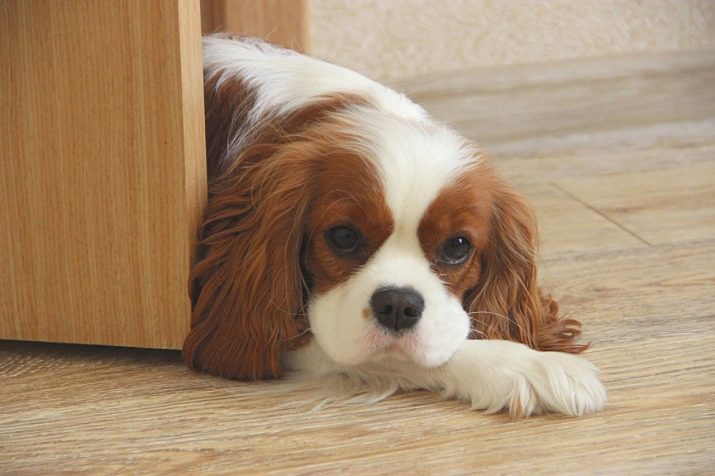
The first time you have to cover the floor with rugs. Expensive carpet should be removed until the baby is toilet trained. In addition to the floor, you will have to think about buying the right dishes, beds and toys.
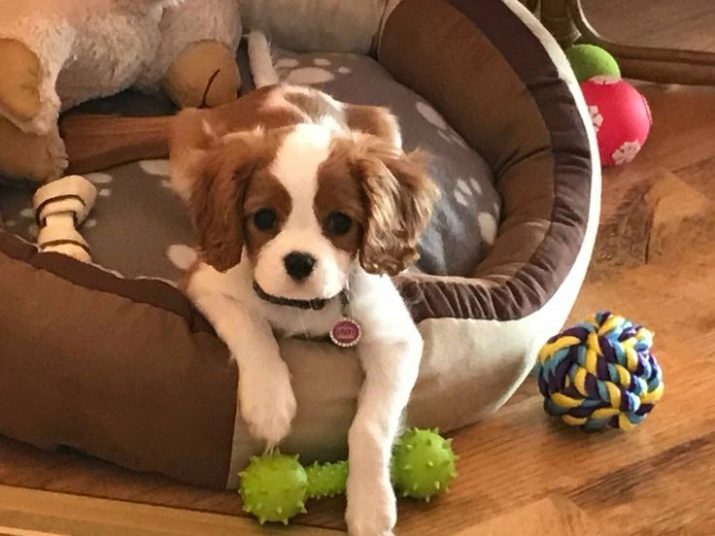
The pet must have its own things, otherwise it will take them away from the owners, not dividing them into "his" and "master's".
Bowls with food or water should be of sufficient size for the dog to be comfortable eating food and lapping water. A private bed will allow your pet to understand its place. In this case, the type of product can be very diverse, as well as its size and shape. When choosing a lounger, the owner relies on his own preferences, not forgetting to take into account the parameters of the animal (the dog should not huddle in a tiny couch).
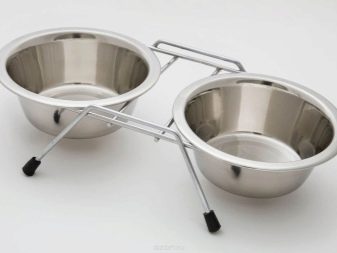

As for training a gentleman to a tray, this is almost impossible. There are only two ways out: the diaper and the street. As a rule, the first option is typical if the owner is too lazy to walk the pet. In addition, the smell of urine and excrement in the house will quickly become the norm for the animal. When teaching a dog to walk outside when needed, it is important to praise it at first for not carrying a "valuable load" home.
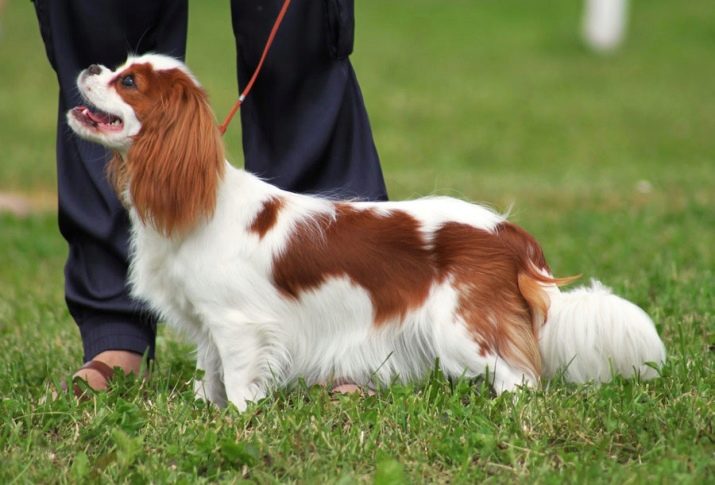
At first, puddles in different places of the dwelling must be endured: you cannot help the cause by shouting, it will not work.
The name of the puppy is chosen in such a way that it reveals his character. You can't call him an offensive nickname, just like you shouldn't scoff at the dog by coming up with a frankly stupid name. In general, it should be short and sonorous. It should be borne in mind that you can choose an option that will be an abbreviation of the full name indicated in the future in the pedigree.

For example, a nickname should consist of two syllables: this is quite enough for a pet to memorize. There is no need to choose options that are too difficult to pronounce. At the same time, it is unacceptable to call a purebred dog by nicknames such as Bobik or Sharik. Great options would be nicknames that match color, in honor of animals that once went down in history.
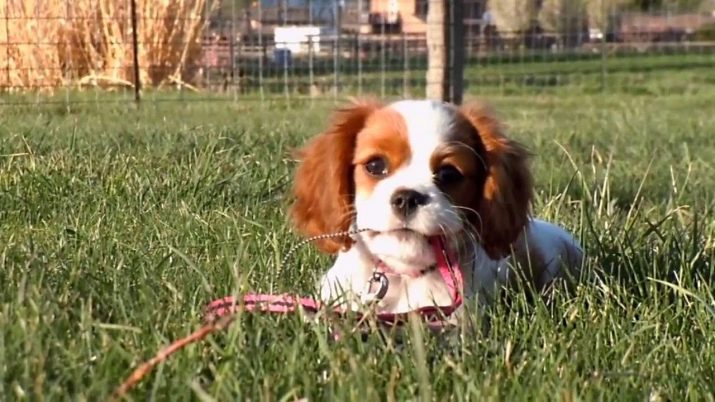
Hair care
A dog cannot brush its own coat, lick it or cut it. This should be done by the owner, paying special attention to the pet's coat during the moulting period. Of course, in the absence of skills, you will have to master them, although at first, if you have finances, you can contact a groomer. Grooming involves taking care of your pet's appearance.
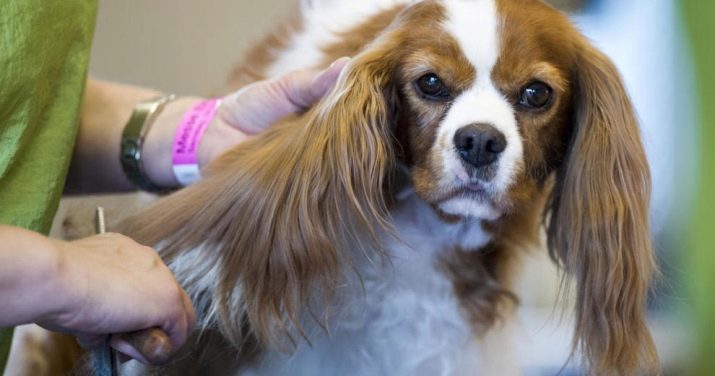
This is bathing, combing hair, removing dead hairs, cutting, shortening claws, cleaning ears, eyes and teeth. The procedure is not cheap, therefore, at will, the client can choose the most relevant stages. As a rule, this is an emphasis on wool and bringing it to a standard and aesthetic appeal. If the owner decides to take care of the wool on his own, several nuances must be taken into account.
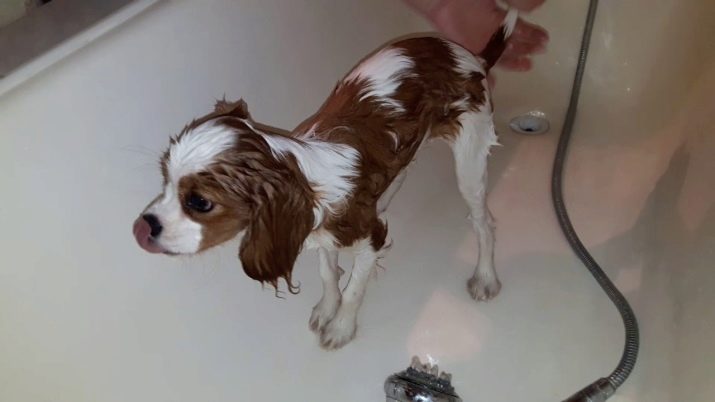
The coat in dogs of this breed is thick and dense, which is why it is necessary to comb it as often as possible. If there is time, it is advisable to do this daily using a special comb, which is selected based on the type of wool and its length. Brushing should be regular, otherwise the coat quickly gathers in mats. During the period when the pet is shedding, you can remove the dead hair with a special comb with a trimmer attachment.
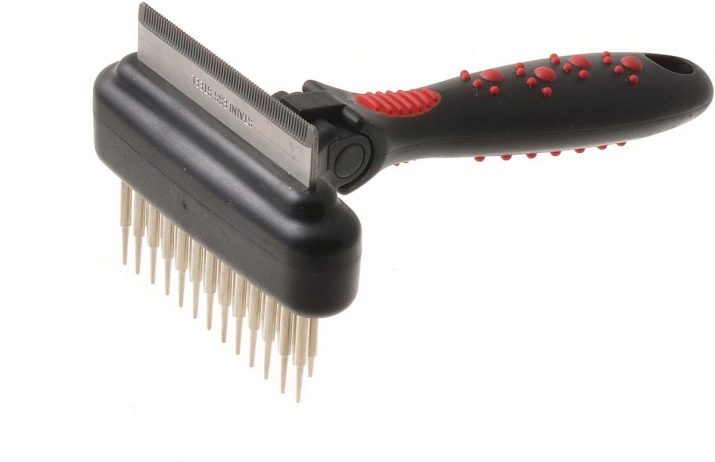
It is necessary to select such a device with special care. It is important to pay attention to the distance between the teeth and their length. With proper selection, the dog will be provided with a skin massage during the procedure, but without injuring it. The width of the comb determines the speed of processing the wool: the smaller it is, the longer the procedure will take.
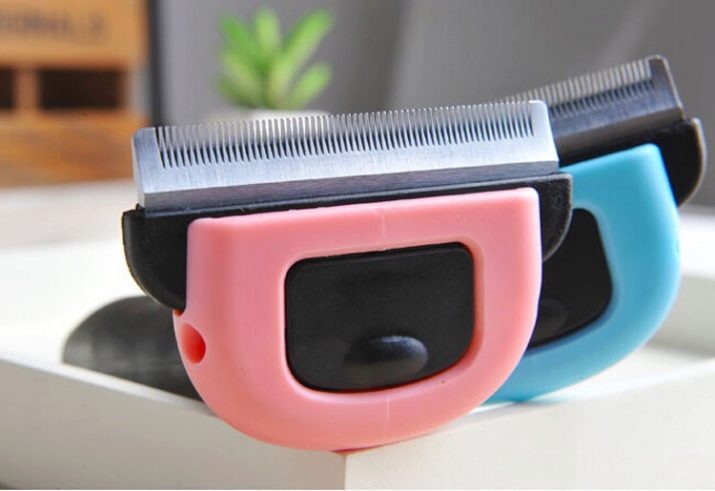
At the same time, a wide comb will make it difficult to process wool in certain areas of the body. It is acceptable to cut your pet's fur between the toes no more than once a month. This procedure is performed for hygienic purposes in order to prevent the formation of tangles.
It is necessary to accustom the animal to grooming the coat immediately after the puppy taken in the nursery adapts to the new place of residence.
Bathing
In theory, the dog would have had enough if it was bathed no more than once or twice every six months. However, given that she constantly walks in the fresh air, the frequency of "ablutions" may be more frequent.Her appearance especially suffers when she walks outside after rain. And given that dogs are extremely poorly tolerant of heat, splashing in the water will once again benefit them.
As for means for washing, shampoos and rinses used by households are completely unsuitable for pets. For animals, special detergents have been developed, from which healthy hair does not fall out, its aesthetic appeal does not deteriorate. However, you should not abuse professional pet shampoos and rinses: sometimes the dog can bathe in ordinary warm water (some individuals manage to lick the conditioner off the coat). When choosing a product, you should pay attention to the type of cover - cavalier spaniels need products for washing long hair.
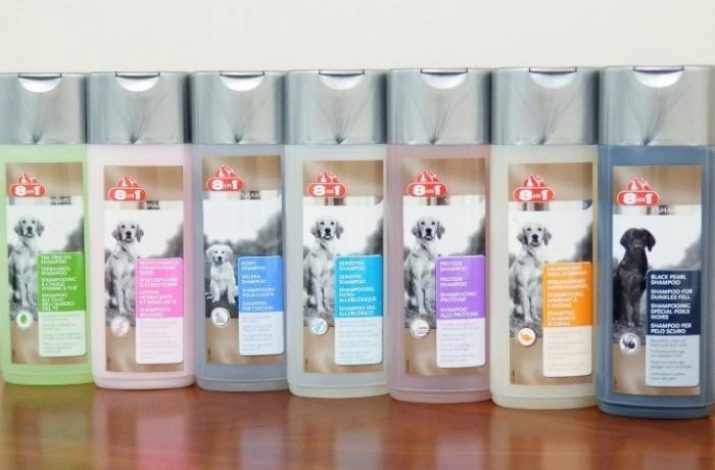
Particular attention should be paid to hanging ears when washing, where a lot of dirt accumulates during walks. It is also important to rinse the feet that collect a lot of dirt when the dog is walking. Using conditioner will make the coat feel silky. It can also be used when you need to rid your pet of tangles. Someone thinks that bathing a pet depends on its class (show babies are washed more often).
Hygiene of ears, eyes, teeth and claws
From time to time you have to clean your dog's ears to remove earwax and other impurities. Care is complicated by the length of the ears and thick hair, which practically covers them. Because of it, the ears are poorly ventilated, which increases the risk of purulent otitis media. For prevention purposes, it is necessary to remove secretions and dirt from the ears at least once a week. To do this, you can use a cotton swab dipped in warm boiled water.
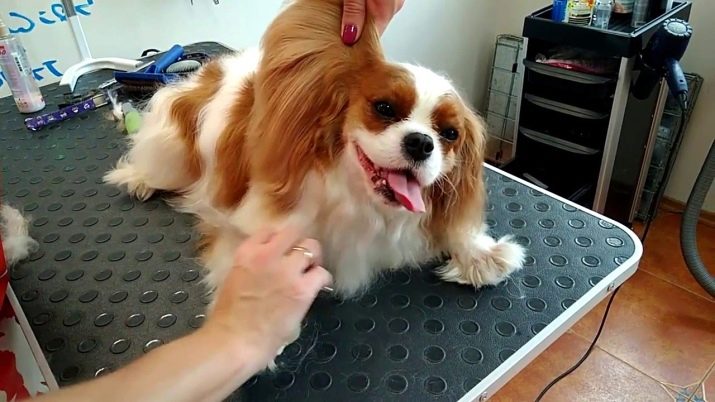
The eyes of childhood dogs often cry. If this problem is found, they have to be wiped with a special lotion. However, before you start this, you need to consult with your veterinarian, who will tell you exactly how and what to do correctly.
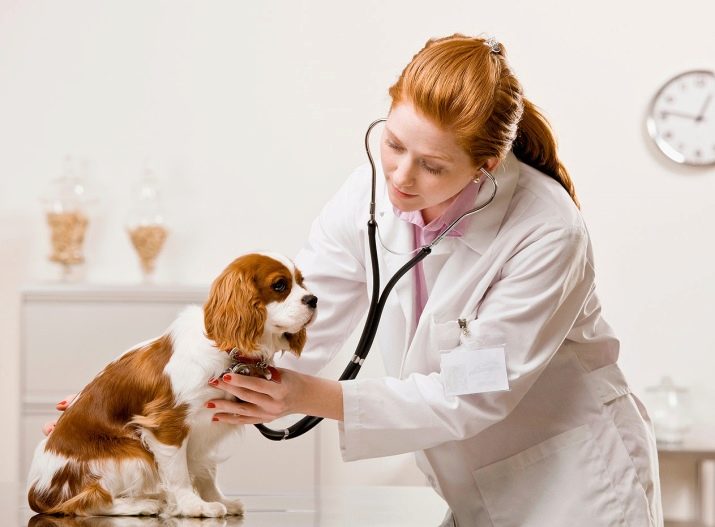
Wipe your eyes so that they do not turn sour, you need to regularly.
Cleaning a dog's teeth is a prerequisite for their health. They will have to be cleaned about twice a week, and therefore the pet must be taught to this procedure from early childhood. The sooner he gets used to it, the better. For cleaning, you must use a special brush and paste. Those that are intended for people cannot be used for hygiene of the mouth cavity of an animal.
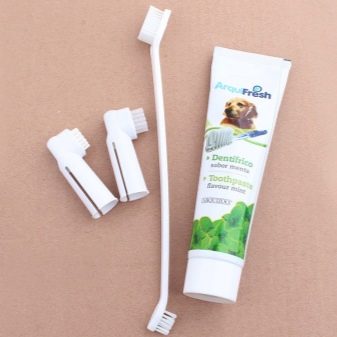
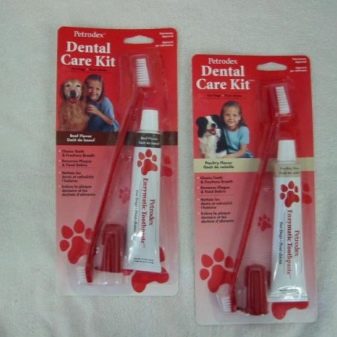
Growing claws can cause a dog's movement discomfort. It is necessary to cut off their ends as they grow back, while the multiplicity can be 1 time in several weeks. You only need to get rid of the tip so as not to accidentally injure the animal.

Health and preventive examinations
Anyone who wants to purchase a small pet of a royal spaniel should take into account that the entire life of a dog, a person will have to monitor its health. This will allow you to identify problems in the early stages of their appearance and prevent some diseases. For example, decorative babies are prone to problems such as arthritis, hernia, joint dislocations, cardiac pathologies, Chiari syndrome and episodic falls.
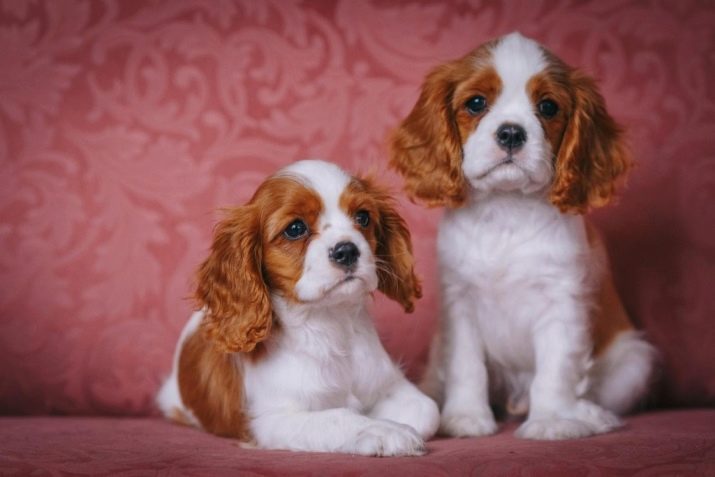
To detect and exclude a particular disease, you must regularly show your pet to a specialist. If the puppy has an allergy, it is necessary to immediately change the type of food and choose the correct diet (hypoallergenic food). If you give your pet due attention, its immunity will be strong. The health and strength of the dog is enough even for rehabilitation assistance to a person who has undergone serious stress.
Vaccinations must be done without fail and in a timely manner. As a rule, they begin when the puppy is 8 weeks old, performing in the nursery. By this time, the baby has acquired a veterinary passport, as well as a formalized pedigree. The owner monitors the compliance with the schedule for further vaccinations, the veterinarian helps him with this.

Cavaliers are vaccinated against enteritis, parainfluenza, salmonella, distemper and leptospirosis.As for the introduction of the hepatitis vaccine, it is administered at 8, 12 weeks, then at six months, a year, and then - once a year. Those representatives of the breed, which are planned to be exported abroad, are injected with the rabies vaccine at 7 months. Vaccination has its own characteristics:
- a small puppy cannot be walked until the second vaccination in his life;
- before the introduction of the drug, the health of the animal is checked;
- in addition to excellent health, 2 weeks before vaccination, the dog is given drugs for worms (with the exception of pregnant, lactating dogs and males after mating);
- the vaccination is done in the nursery or in the veterinary office, about which an entry is made in the veterinary passport of the animal;
- quarantine is introduced for a period of 2 weeks from the moment the vaccine was introduced;
- if the observed negative symptoms persist within 24 hours, the dog is taken to the doctor.
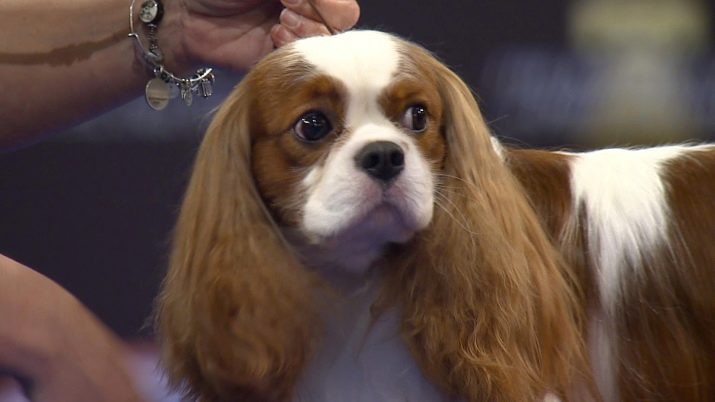
Walking
In order for a pet to grow up active and develop correctly, it needs fresh air. It will not be possible to do with simple airing of the room: walks on the street are extremely important for the animal. The first walk can be done after the second vaccine has been administered.
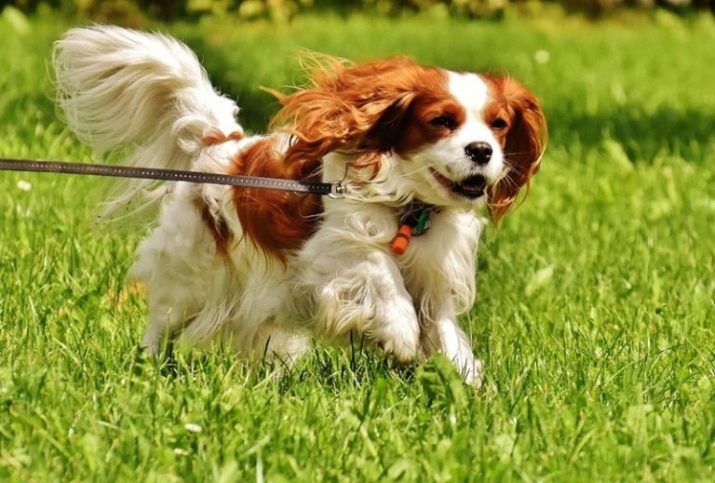
To prevent the baby from running away from the owner, you must use a leash.
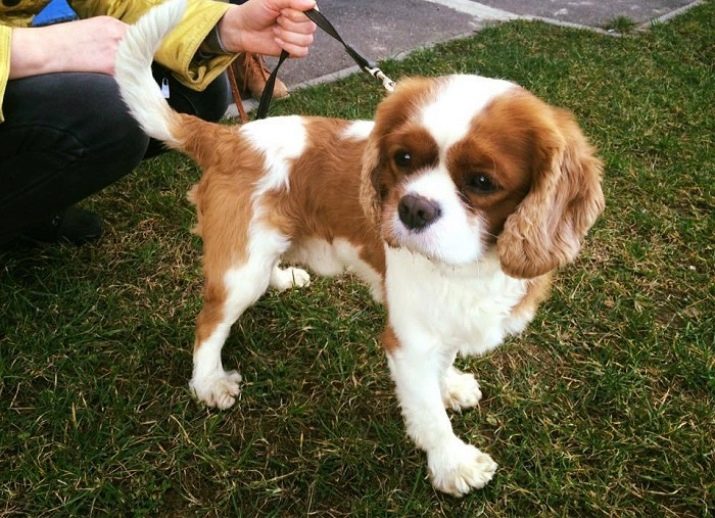
As far as possible, it is better to walk the dog at the same time, the duration of the walk should not exceed 40 minutes. From early childhood, the dog is walked more often in order to quickly train it to the toilet on the street. When she is four months old, the number of walks per day can be reduced. Moreover, if at first the walk should not be long at all, now its time can be increased.
Walking is necessary not only to maintain good immunity: the socialization of the pet is important. The sooner it happens, the better, the baby will not be afraid of strangers and street animals. You can introduce the dog to other animals, and joint training and walks with them are welcome. For example, you can practice the passage of the "obstacle course" together.
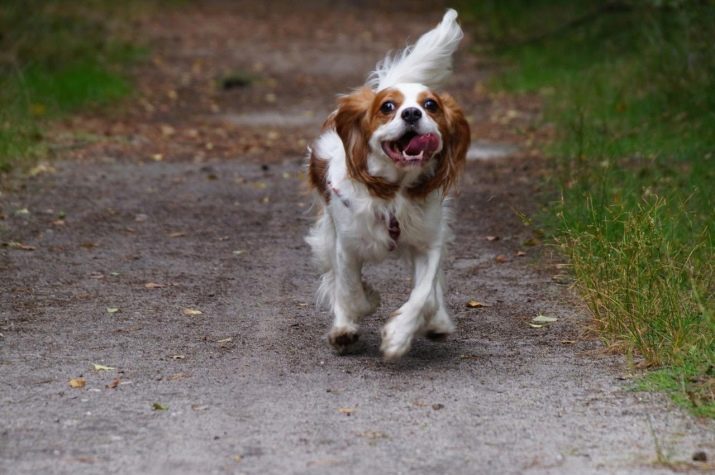
However, vigilance is the main point of walks, because what the dog can pick up from the ground can upset the digestive system or infect some kind of virus. It is better to walk a pet of this breed where there is no asphalt. This will protect the dog's paws from injury.
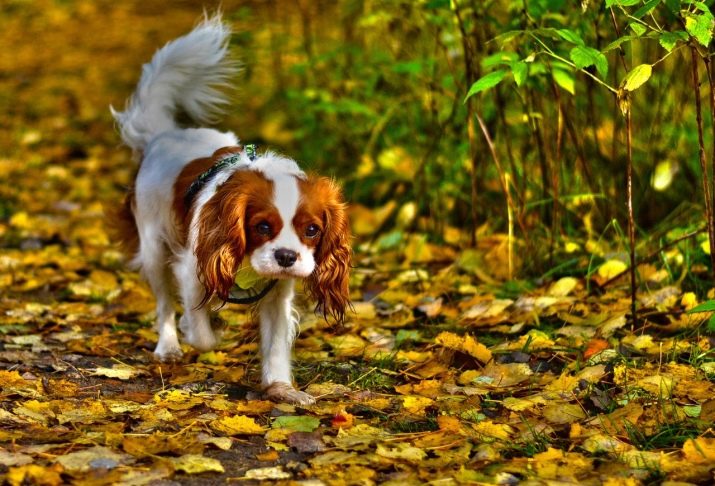
After the walk, it is necessary to examine the animal for the presence of parasites (ticks or fleas). If it is found, it is necessary to urgently contact a veterinarian who will select a medicine for parasites, its dosage and the frequency of the procedure. It is impossible to hesitate in contacting a specialist when parasites are found: they multiply at a tremendous speed, and also cause tremendous discomfort to your beloved pet.
What to feed?
The nutritional diet of the dog must be balanced, it must contain the necessary vitamins and nutrients. Food must be selected in such a way that it matches the age of the pet and its individual characteristics (for example, you cannot buy regular food for allergic pets). From birth, the puppy receives everything it needs with its mother's milk.

He needs the first feeding when he reaches the age of 6-8 weeks.
At this time, the ego is fed no more than 4 times a day. A half-year-old puppy eats three times a day, a one-year-old - 2 times. Someone thinks that an adult pet should be fed once a day. As for being picky about food, this is not about Cavalier Spaniels.
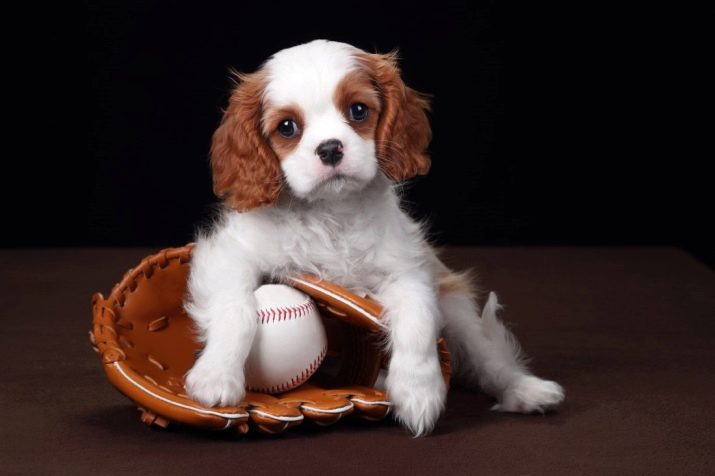
They willingly eat whatever is offered to them.
Therefore, you need to choose food very thoroughly. In general, food can be natural or industrial. Dogs love professional dry food, which is convenient in terms of dosage calculation. Compared to natural food, there is a selection of a specific product among the varieties.
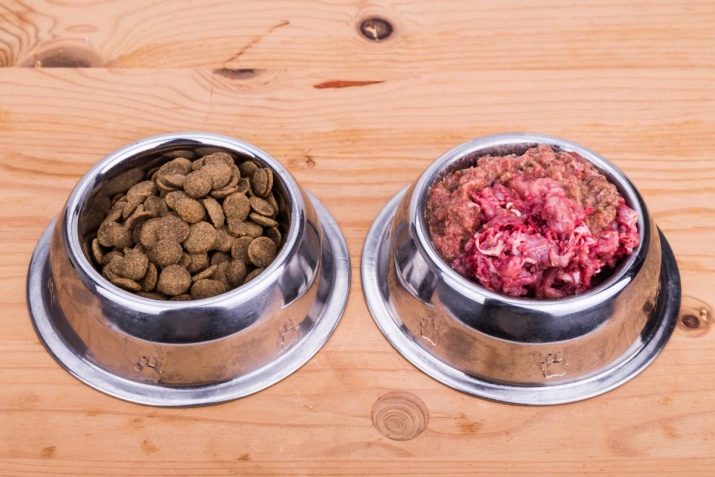
For example, you can buy food for puppies with low activity and long hair. Food for dogs should be chosen premium or holistic (grain-free).If a decision is made to feed the pet with natural food, then it is necessary to ensure that there is always meat in the nutritious diet.
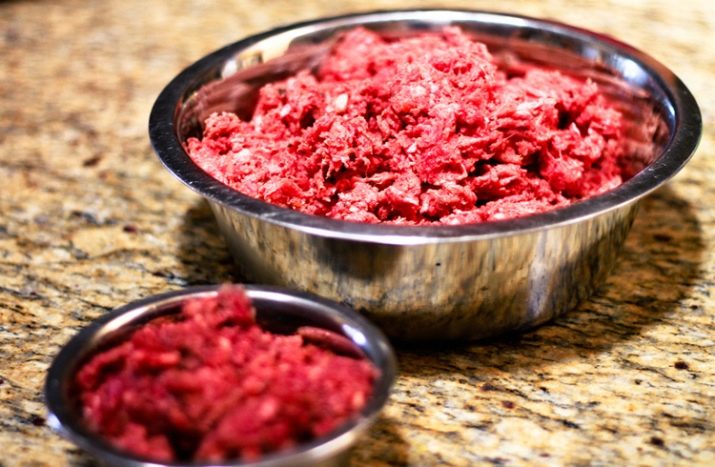
In any portion, it should be 50%, while lean meat is suitable for food, for example, beef, chicken, turkey, lamb are suitable. You can give the animal meat both raw and boiled. In addition to it, the diet should contain cereals (rice, buckwheat, oatmeal), vegetables and even fruits (with the exception of citrus fruits, pears). It is necessary from time to time to give your pet cooked and boneless sea fish, eggs and dairy products (cottage cheese and kefir).
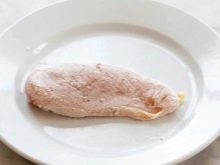
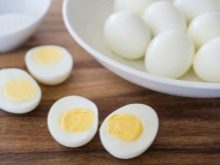
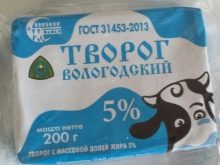
Flax seeds are essential for the animal: they are a natural biological supplement to food and help to improve the condition of the coat. In addition, they act as a digestive system stimulant. There should be no bones in the dog's diet, as they can damage the animal's esophagus.
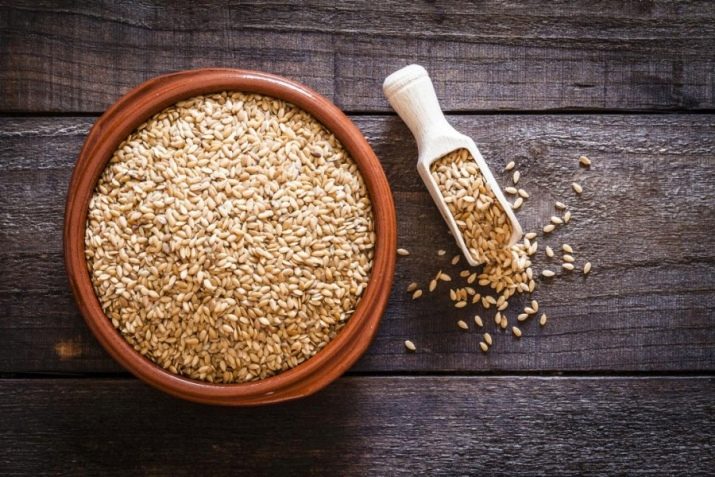
In some cases, this can be fatal.
The breeder should take into account the fact that not everything that a person eats is suitable for a pet. For example, dogs are strictly prohibited from eating pork, sausage, various smoked meats and even butter. They should not be allowed to feast on fried and spicy food: this is harmful to their health.
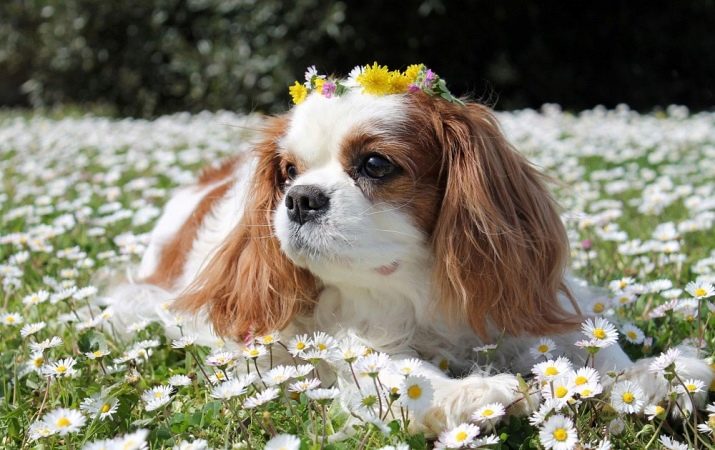
It is undesirable to treat animals with sweets: sweets are also contraindicated for them. In addition, they should not eat flour products. Vitamin complexes necessary for a pet from puppyhood are selected by a veterinarian.
It is also important to take into account the fact that it is undesirable to change the food chosen by the owner as the basis of nutrition, just as it is impossible to mix natural and industrial food. The transition can be fraught with upsetting the digestive system. Regardless of the feeding time, the dog should always have a bowl of fresh water. The animal needs water all the time, the owner's laziness can lead to the fact that the pet will be forced to look for water on its own, and far from the best places at home.
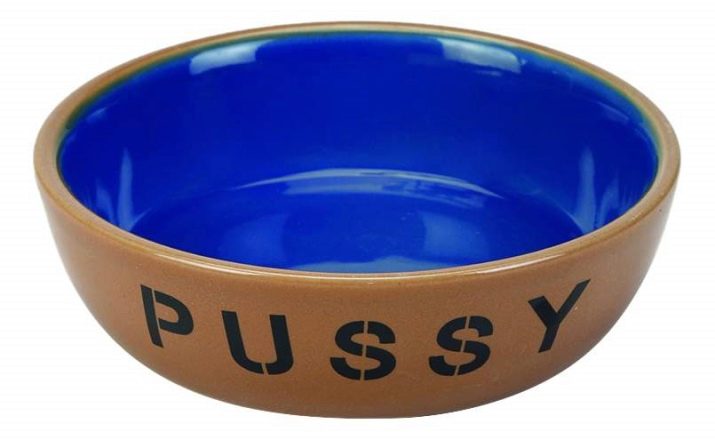
Many members of the breed are prone to food allergies. You need to choose food especially carefully, studying the composition and such mark as "traces of presence", for example, chicken or cereals. It is important to pay attention to the expiration date. As for cheap food, it is not suitable for dogs due to its poor quality. In addition to the fact that he does not carry any health benefits, in some cases he can harm him.
Breeding
The Cavalier King Charles Spaniel breed is characterized by such a feature as a false pregnancy of females. It is possible to breed puppies only on condition that the individuals for mating are healthy. Before mating, it is necessary to find out if the partners have any pathologies, whether they correspond to the standard. Ideally, the mating itself can take place in a nursery, which will reduce possible risks and reduce the likelihood of complications to a minimum.
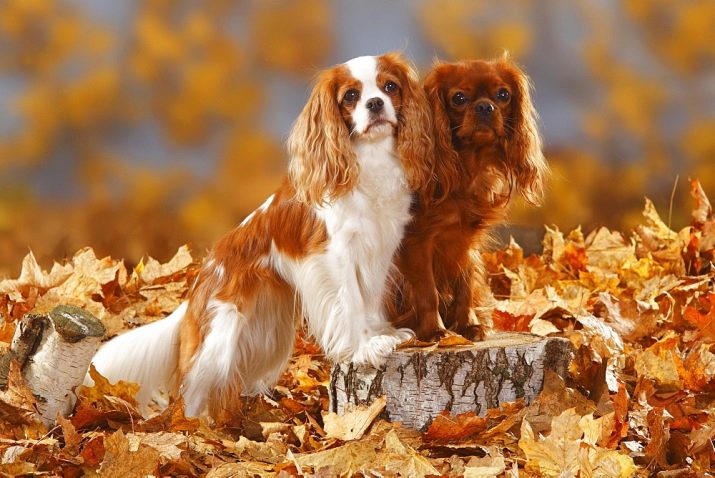
Someone is not afraid of difficulties and uses the services of private traders, turning to them for knitting. It is generally accepted that dogs are ready for breeding by 20 months, although their sexual maturity is already at 10. Still, experts recommend not to breed dogs earlier: you need to wait until the female has a third estrus. If the dog is younger, then it is unlikely that he will be able to leave offspring, and few will give a guarantee that the puppies will be born healthy.
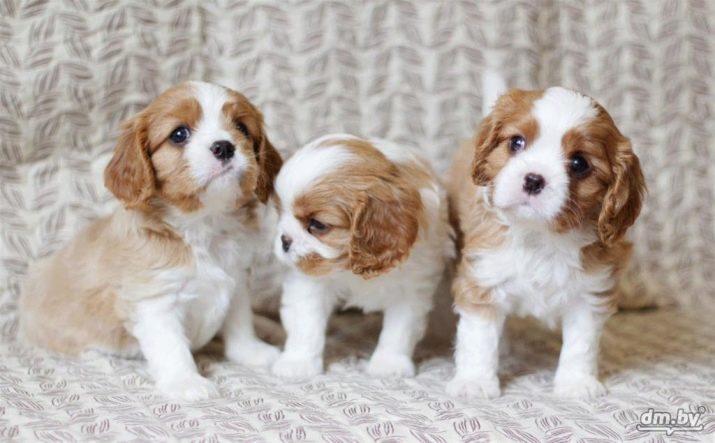
The readiness of the female can be determined by several signs. For example, her behavior becomes playful, and her loop swells and light discharge appears. The female is brought to the male, where the partners should get to know each other.
The need for mating on the territory of a male is simply explained: in his native territory, nothing will distract him from the female, he will not need to explore a new place, get acquainted with its inhabitants.To begin with, the dogs are walked together, during the act (especially if the partners have it for the first time) a specialist helps the female, holding her belly and not allowing her to sit down.
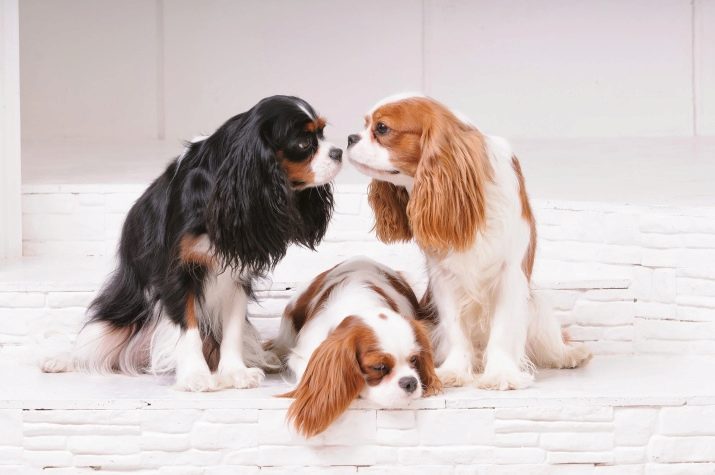
Re-knitting is carried out after a couple of days.
Training
There are conflicting opinions about the ability of dogs to train. However, the bulk of the pets of the considered decorative breed is very active in contact with the owner when he tries to train them. And here a lot depends on the owner himself, his manner of training and attitude towards the pet. For example, other animals do not accept commands, considering it to be something boring and uninteresting.
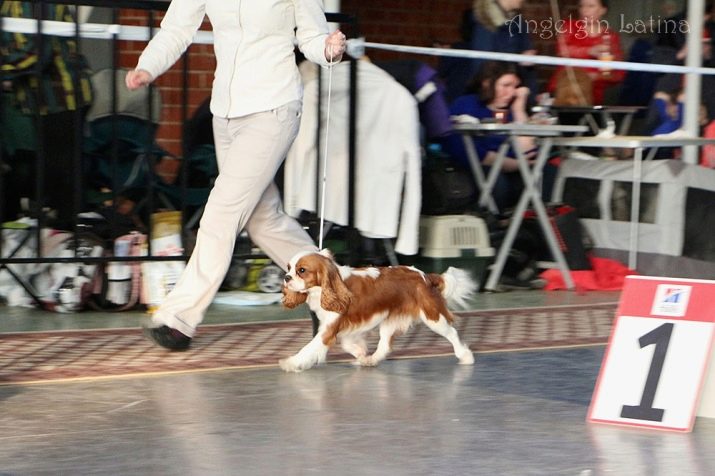
In view of this, professional dog handlers recommend holding training classes in the form of active games. In addition to the affectionate attitude towards the pet, the owner during the training period will have to constantly make changes and variety.so that the animal does not get bored and does not lose interest in activities. Considering that the gentlemen still have the rudiments of hunting instincts, as evidenced by the choice of the object of pursuit during a walk, they can be taught the commands "to me", "fu".
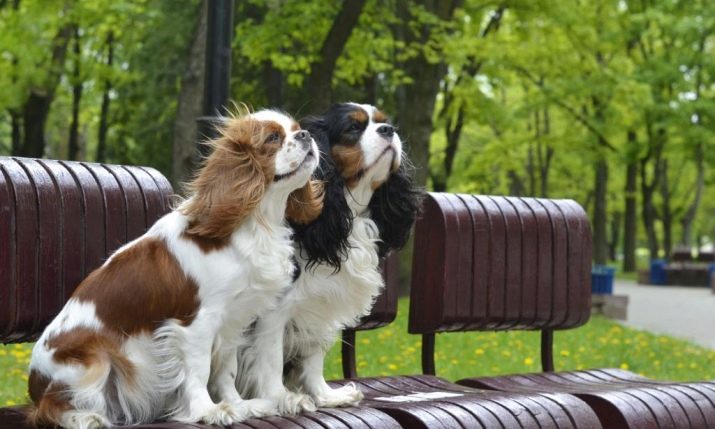
At the age of 5 months, the pet is able to learn a stance or a "stand" command. Representatives of the breed who take part in exhibitions are taught to it. However, as the cynologists note, you cannot immediately teach the animal to several commands at once.
This is due to the fact that the dog can confuse commands and do not at all what is required of it.
Owner reviews
The Cavalier King Charles Spaniel is liked by many connoisseurs of decorative dogs. This is evidenced by the reviews left on information portals. The owners of these dogs write that they do not have an unreasonable change of mood.
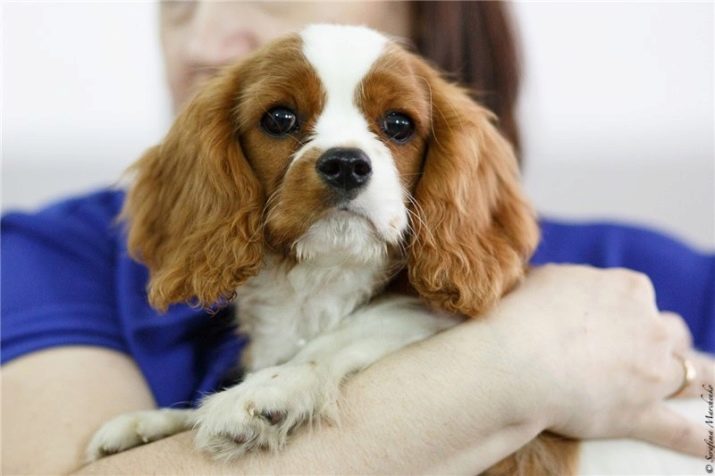
They are on a positive wave almost all the time.
However, if suddenly for some reason they are left alone for a long time, individual individuals can arrange a real mess in the house. If not one, but two pets of the same breed live in the house, their attention will be occupied by each other., and therefore you can not worry too much about furniture and things. As for the relationship with other pets, decorative dogs, according to the breeders, try not to create conflict situations.

They rarely show leadership qualities, preferring to move away from any misunderstanding.
They can be called extroverts: everyone they meet is a kindred spirit who can be trusted with literally everyone. Representatives of the breed get along well with cats, but the latter rarely respond to them with mutual sympathy. Dogs go to great lengths to be stroked, combed and squeezed. They love tactile contact, and therefore they never refuse it, as well as the opportunity to play.
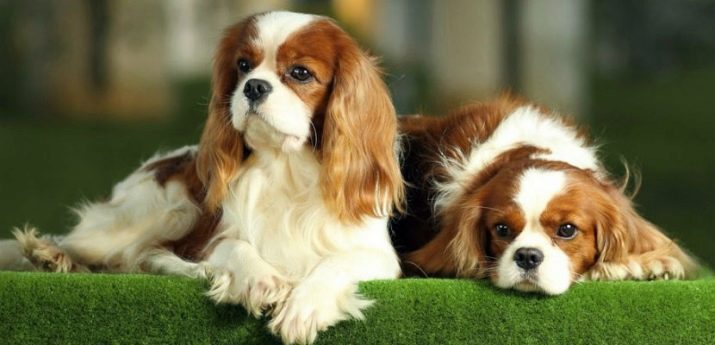
All about the Cavalier King Charles Spaniel dog breed in the video below.






































